 Here in my hometown we are blessed with an exquisite landmark building, the 1681 meetinghouse known as Old Ship Church, whose name may have been inspired by the building’s vaulted roof, resembling a ship’s hull, built of oak timbers. Used originally as a gathering place for both civic discussion and religious worship it is, today, the oldest church structure in the United States in continuous use. Behind the meetinghouse is the town’s oldest cemetery, whose earliest burials pre-date construction of the meetinghouse. Sometimes called the First Settlers graveyard, it is the final resting place of the families who founded Hingham – Cushing, Lincoln, Thaxter, Beal, Hobart – their descendants, and other prominent residents – including two Massachusetts governors. It is one of the few historic cemeteries where burials are still taking place.[1] Continue reading Touched by an angel
Here in my hometown we are blessed with an exquisite landmark building, the 1681 meetinghouse known as Old Ship Church, whose name may have been inspired by the building’s vaulted roof, resembling a ship’s hull, built of oak timbers. Used originally as a gathering place for both civic discussion and religious worship it is, today, the oldest church structure in the United States in continuous use. Behind the meetinghouse is the town’s oldest cemetery, whose earliest burials pre-date construction of the meetinghouse. Sometimes called the First Settlers graveyard, it is the final resting place of the families who founded Hingham – Cushing, Lincoln, Thaxter, Beal, Hobart – their descendants, and other prominent residents – including two Massachusetts governors. It is one of the few historic cemeteries where burials are still taking place.[1] Continue reading Touched by an angel
Tag Archives: Spotlight
2018: the year in review
As we begin the countdown for 2019 – and look forward to the blog’s fifth anniversary in January – I have selected some posts from the first half of 2018 to showcase the range of subjects covered in Vita Brevis during the last year.
 Alicia Crane Williams started the year with a series of posts on establishing criteria for what constitutes an “excellent” genealogy, as distinguished from a “good” (or a “poor”) one:
Alicia Crane Williams started the year with a series of posts on establishing criteria for what constitutes an “excellent” genealogy, as distinguished from a “good” (or a “poor”) one:
A “scoring” system for genealogies would be interesting. If, for example, we had ten categories on which to judge a genealogical source, and each category had a potential ten points maximum, the “perfect” score would be 100. Of course, this would all be subjective, but it would give us a way to group works for comparison (top 10%, bottom 50% etc.). Continue reading 2018: the year in review
A genealogist’s beginnings
[Editor’s note: This is the second part of a two-part series of interviews with David Allen Lambert; the first part may be read here. The present article originally appeared in the Society’s NEXUS newsletter, 4: 3.]
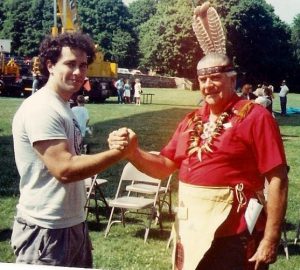 Question: When did you first become interested in family history?
Question: When did you first become interested in family history?
Answer: Since the age of 12 I have belonged to the Stoughton Historical Society.
Q: That is a young age to begin. You were probably the youngest member.
A: I was. I started in 1981, and in 1984 they made me the assistant curator, when I was just 15. Continue reading A genealogist’s beginnings
A genealogist’s development
[Editor’s note: This is the first of a two-part series of interviews with David Allen Lambert.]
 Question: You joined NEHGS in 1993 and currently are its Chief Genealogist. What roles have you held in your 25-year tenure?
Question: You joined NEHGS in 1993 and currently are its Chief Genealogist. What roles have you held in your 25-year tenure?
Answer: When I first joined NEHGS in 1993 I had been a member for seven years. My first job was in Enquiries Services, which is now known as Research Services. When the circulating library had an opening on the fourth floor, I began working with our members who requested books to be sent to them as a loan. It was like Amazon.com for genealogists – pulling orders and shipping. The circulating library gave me a strong understanding of our collections. Continue reading A genealogist’s development
History repeats
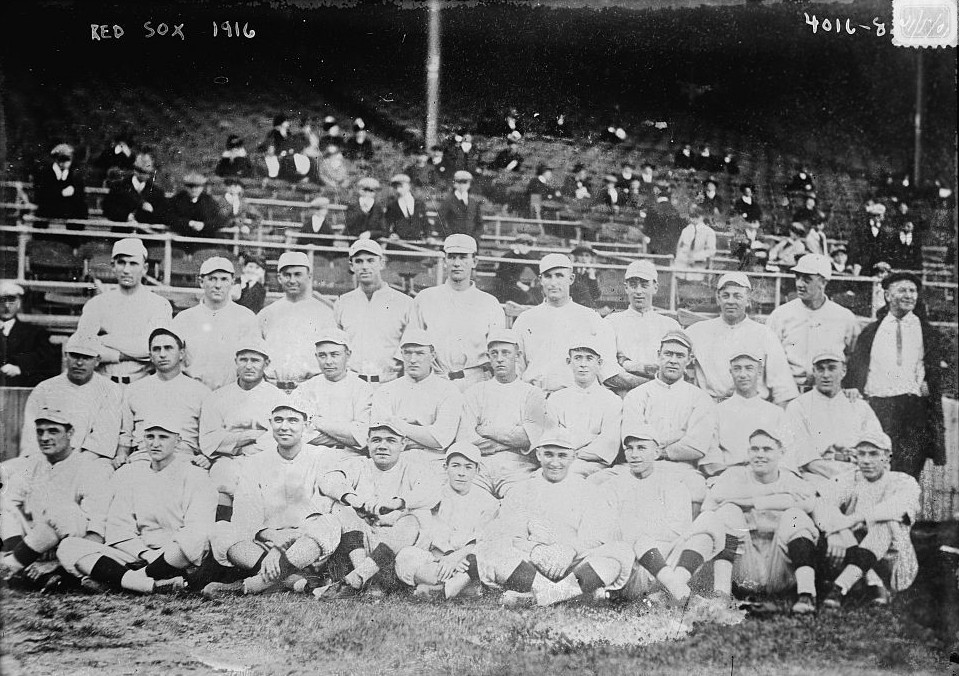
Between 1919 and 2003, a Boston loss in the fall classic of the World Series was, sadly, a familiar occurrence. In the decades before 1919, things were different. The Boston Americans rallied to beat the Pittsburgh Pirates in the first World Series in 1903. During the second decade of the twentieth century, the Red Sox were alive and well with pitching, fielding, and batting as they won the 1912, 1915, 1916, and 1918 World Series. This month, one hundred and two years of history repeat. In the 2018 World Series, the Boston Red Sox are once more playing the Los Angeles Dodgers. Continue reading History repeats
Reuniting families
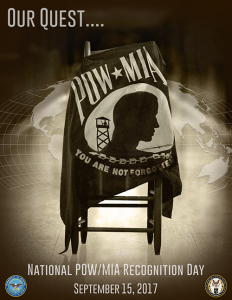 My biggest fear was marrying someone in the military.
My biggest fear was marrying someone in the military.
I couldn’t fathom the idea of being a military wife with all its different aspects. I didn’t like the idea of my fate and my husband’s fate being decided by the winds of politics and world commotion. I didn’t like the idea that, any day, they could need him and deploy his unit, and I would be stuck at home, alone, waiting for him to come back. One question haunted me as I was dating and falling in love with the soldier who would become my husband:
What if he left and never came back? Continue reading Reuniting families
A well-kept secret
 This week I received my Fall issue of The Genealogist [TG], published by the American Society of Genealogists (ASG). It struck me that this might be one of genealogy’s best kept secrets.
This week I received my Fall issue of The Genealogist [TG], published by the American Society of Genealogists (ASG). It struck me that this might be one of genealogy’s best kept secrets.
TG has been published twice a year over 32 years. It was founded in 1980 by Neil D. Thompson, FASG,[1] and Neil edited the first ten volumes through 1989. In 1997, the magazine was revived by ASG under the editorship of Charles M. Hansen, FASG, and Gale Ion Harris, FASG, who have produced volumes 11 (1997) through 32 (2018). A full list of articles published in volumes 1–31, and sample articles, are posted on the society’s website: Continue reading A well-kept secret
Noble contributions
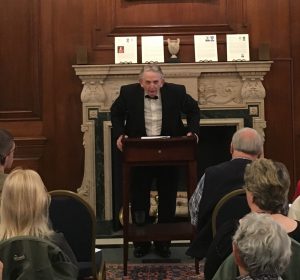 The Society’s Treat Rotunda was the setting Saturday for Gary Boyd Roberts’s seminar marking the publication of his new book, The Royal Descents of 900 Immigrants to the American Colonies, Québec, or the United States. More than thirty participants thronged the room to hear Gary’s reflections on new scholarship on Americans of royal descent; for the first time in the series, this volume also includes information on the royal lines of French-Canadians. The day concluded with a round table session featuring some of the scholars with whom Gary has collaborated in amassing his growing collection of notable Americans of royal descent. Continue reading Noble contributions
The Society’s Treat Rotunda was the setting Saturday for Gary Boyd Roberts’s seminar marking the publication of his new book, The Royal Descents of 900 Immigrants to the American Colonies, Québec, or the United States. More than thirty participants thronged the room to hear Gary’s reflections on new scholarship on Americans of royal descent; for the first time in the series, this volume also includes information on the royal lines of French-Canadians. The day concluded with a round table session featuring some of the scholars with whom Gary has collaborated in amassing his growing collection of notable Americans of royal descent. Continue reading Noble contributions
Germans in the Queen City
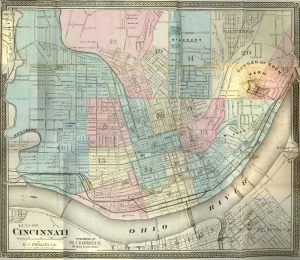 Founded in December 1788, Cincinnati has long been a city with a rich cultural heritage, forged largely from the influences of its significant immigrant populations. Situated at the junction of the Ohio and Licking Rivers, Cincinnati was viewed as a natural destination for immigrants who sought work in the city’s booming industries.
Founded in December 1788, Cincinnati has long been a city with a rich cultural heritage, forged largely from the influences of its significant immigrant populations. Situated at the junction of the Ohio and Licking Rivers, Cincinnati was viewed as a natural destination for immigrants who sought work in the city’s booming industries.
Initially, Cincinnati was settled largely by English and Scottish settlers who came westward from the east coast and north from Kentucky.[1] Continue reading Germans in the Queen City
ICYMI: Boston riches
[Author’s note: This blog post originally appeared in Vita Brevis on 23 February 2017.]
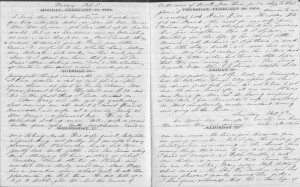
As I complete publishing excerpts from the 1865 volume, the final year in what I hope will be a single-volume account of the Civil War in the Hedwiga Regina Shober Gray diary, it seems like a good time to revisit a Gray diary primer from 2017.
Certain diaries, and their authors, become short-hand for a time and place: Samuel Pepys’s diary of seventeenth-century London, for example, or Anne Frank’s diary of wartime Amsterdam. The diaries of Philip Hone and George Templeton Strong are often invoked to cover the first half of the nineteenth century in New York; for the Civil War years, readers turn to Mary Boykin (Miller) Chesnut’s Diary from Dixie (1905). Continue reading ICYMI: Boston riches